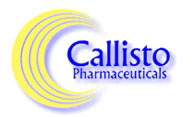Several important bacteria, including staphylococcus (Staph) and streptococcus (Strep), produce toxins (superantigens) that can produce debilitating symptoms or death and are currently recognized as potential bioterrorism agents. These bacterial superantigens are among the most lethal toxins known to man. Literally nanogram amounts, or small numbers of the organisms that produce them, trigger an excessive cellular immune response that can lead to lethal toxic shock within 24 hours of ingestion or aerosol spray of these toxins. Successful introduction of these agents into the drinking water supply, aerosol or food would be devastating, incapacitating large numbers of the population both military and civilian. The toxins (superantigens) produced by these bacteria non-specifically activate the immune system. Aberrant activation leads to overproduction of cytokines (factors that effect other cells and are synthesized by immune cells) resulting in shock, multiple organ failure and death. Notably, weaponized forms of Staph and Strep are generally expected to be more easily produced in an aerosolized form than, for instance, anthrax and could lead to a devastating response if dispersed in an appropriate fashion.
Callisto’s superantigen technology has considerable potential for the development of defensive agents to treat “superantigen” mediated diseases and was recently awarded a $1.1 million U.S. Army research grant.
Callisto’s approach is to develop peptides and humanized antibodies as agents against weaponized bacterial toxins to protect the military and civilians. Callisto has developed peptides and antibodies that nullify the actions of superantigen toxins – Zabriskie et al., Infection and Immunity 69: 875-884, 2001. These include 12-mer peptides that are homologous to a highly conserved segment of the superantigen toxin. Callisto’s lead peptide, 6343, has been shown to be protective against a wide range of superantigen toxins produced by Streptococci and Staphylococci in animal models of toxic shock syndrome and sepsis. The development of ligand-specific peptides represents a pathway of streamlined rational drug development and production, since commercial quantities of specifically designed peptides can be produced through established contract GMP facilities. In an important breakthrough, Callisto has recently discovered and patented D- and L-trimer peptides with comparable activity to 6343 and demonstrated their efficacy in in vitro studies. This is a highly significant development as the synthesis, cost of goods and difficulty of developing a tripeptide would be considerably less than those for the 6343 12-mer peptide.
Callisto’s second drug candidate to protect against a Strep/Staph-based bioweapon is a neutralizing antibody. Using a synthetic peptide whose sequence is highly homologous to a highly conserved region contained in toxins of Gram-positive bacteria, Callisto has developed a proprietary antibody (Anti Toxic Shock or ATS antibody) that recognizes the different toxins and neutralizes their biological effect. This antibody has also been shown to protect animals from shock. Callisto is developing several forms of this antibody to be evaluated for their ability to block the effect of bacterial toxins and prevent or mitigate the signs and symptoms of toxic shock.
A major advantage of Callisto’s superantigen technology is that these peptide/antibody agents cross-react against virtually all known strains of Staph and Strep and would be expected to work against any future variant strains, either man-made or naturally occurring. In an important validation of this concept, peptide 6343 has been shown to act against 3 newly characterized streptococcal pyrogenic exotoxins, SPEG, SPEH and SPEZ.
In a separate series of experiments, Callisto has also been exploring the superantigen technology as a potential treatment for systemic inflammatory response syndrome (SIRS) (Sepsis), an often-fatal condition. Most cases of SIRS are due to infection caused by either Gram-negative or Gram-positive bacteria. There are an estimated 400,000-500,000 cases of SIRS annually in the U.S. As with toxic shock, SIRS involves the over activation of the immune system beginning with cytokine synthesis and release. In SIRS due to infectious disease, however, excess cytokine synthesis is triggered by components of the cell wall of Gram-positive bacteria or the outer membrane of Gram-negative bacteria. Callisto’s ATS antibody has been shown in animal models of SIRS to block cytokine release triggered by both cell wall and outer membrane components, and may therefore be effective in SIRS cases caused by either Gram-positive or Gram-negative bacterial infections. In addition, since SIRS caused by Gram-negative bacteria is often complicated and aggravated by low-grade infection with Gram-positive bacteria, the use of ATS antibody or the 6343 peptide is expected to be beneficial.
